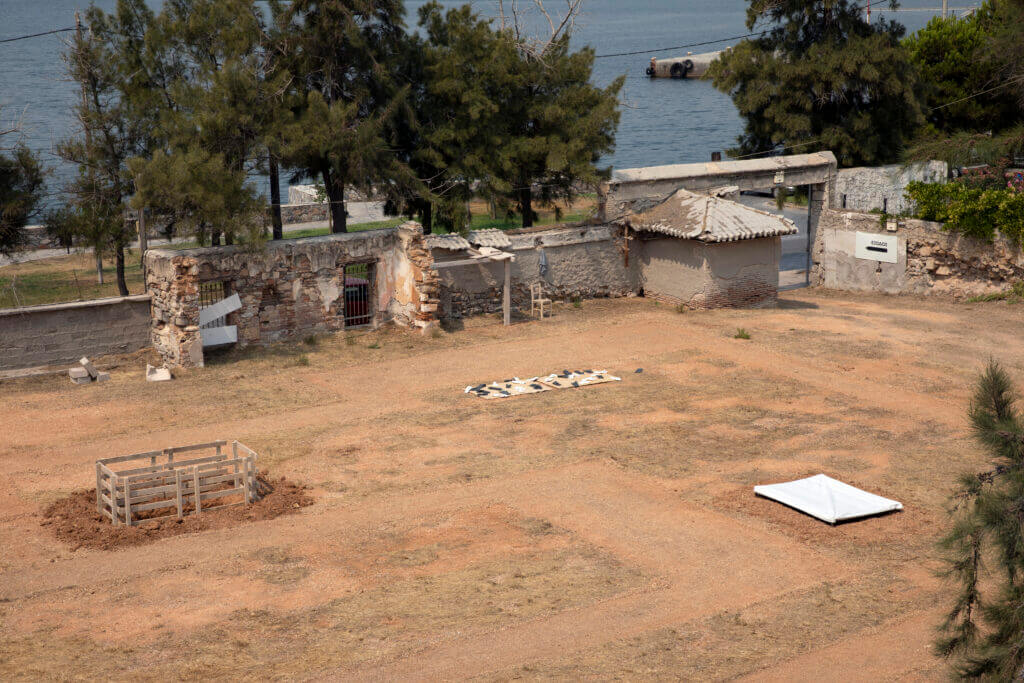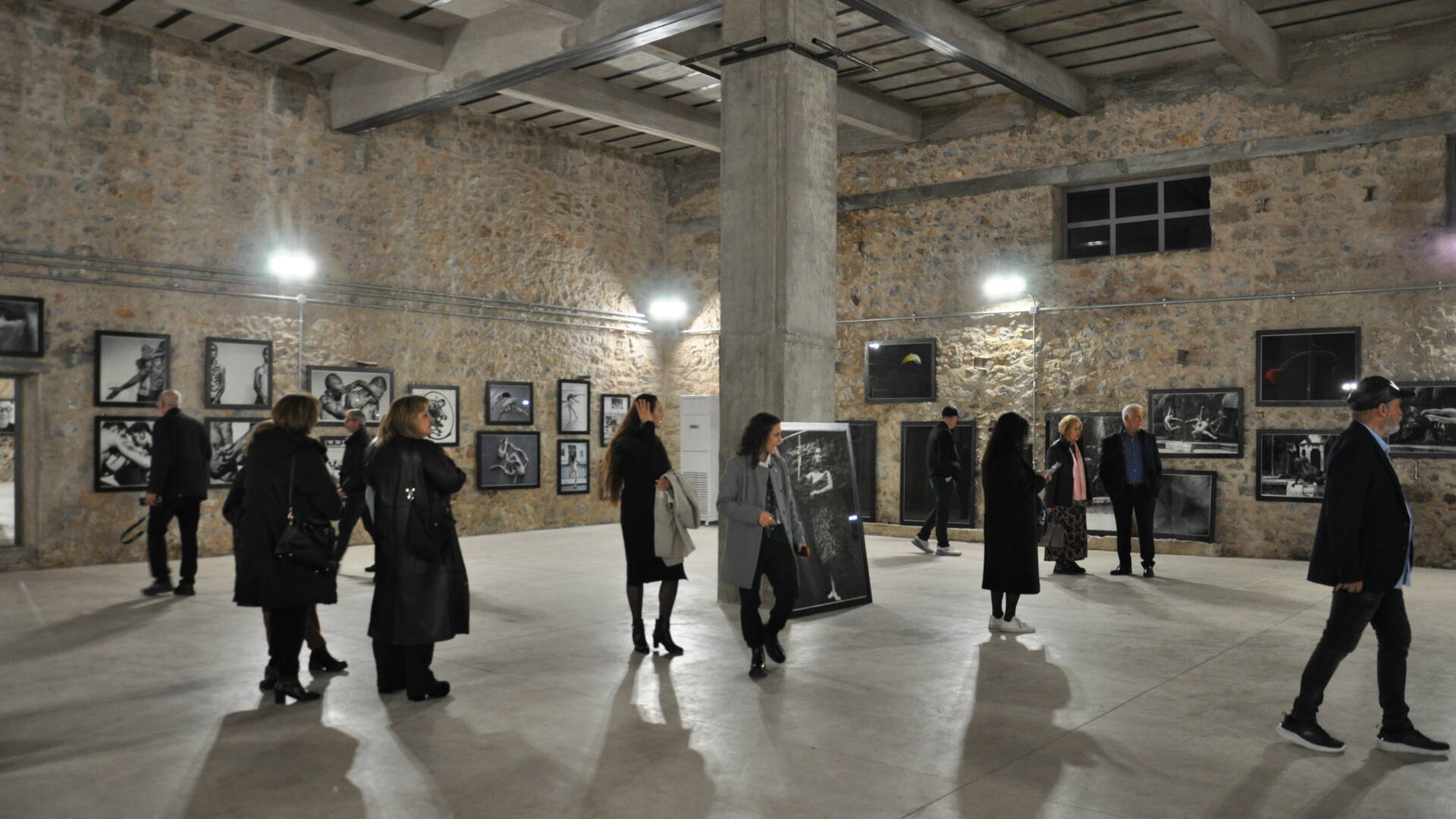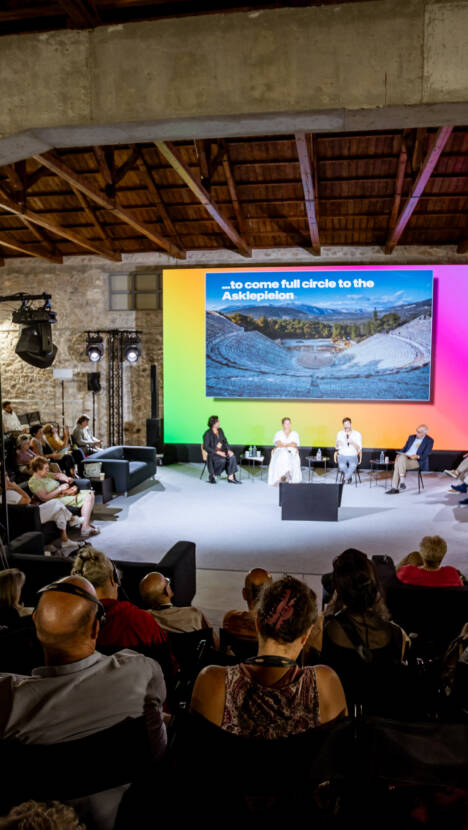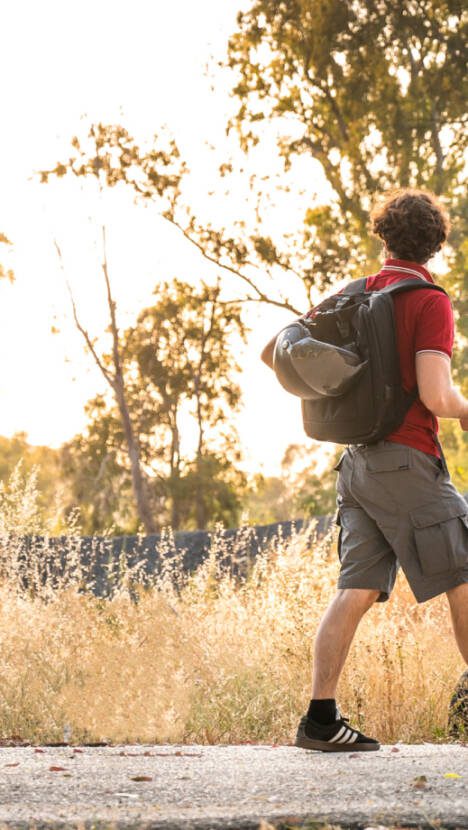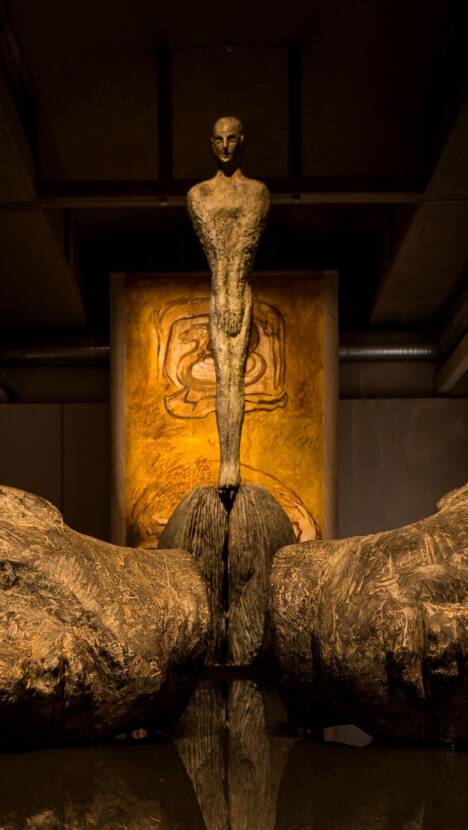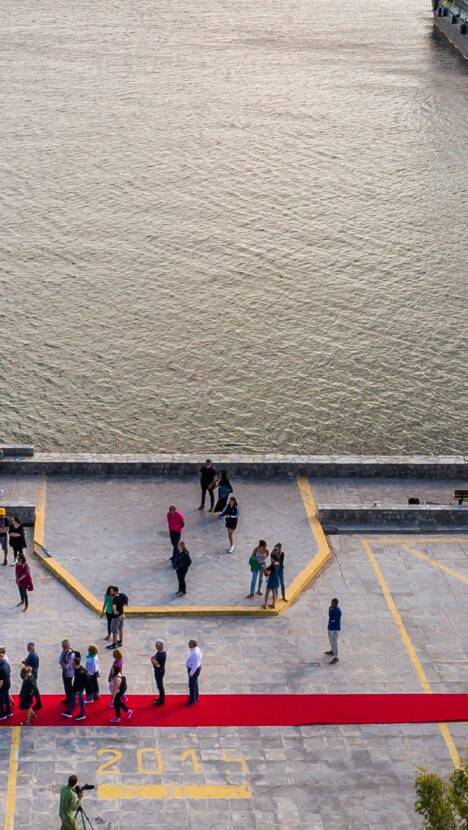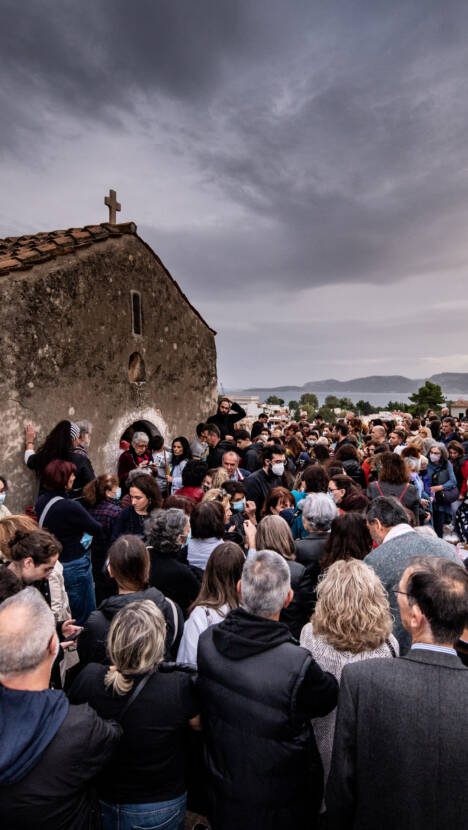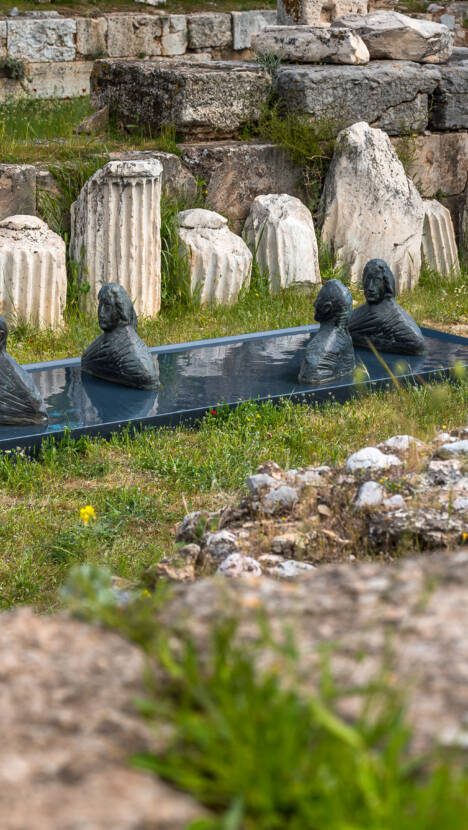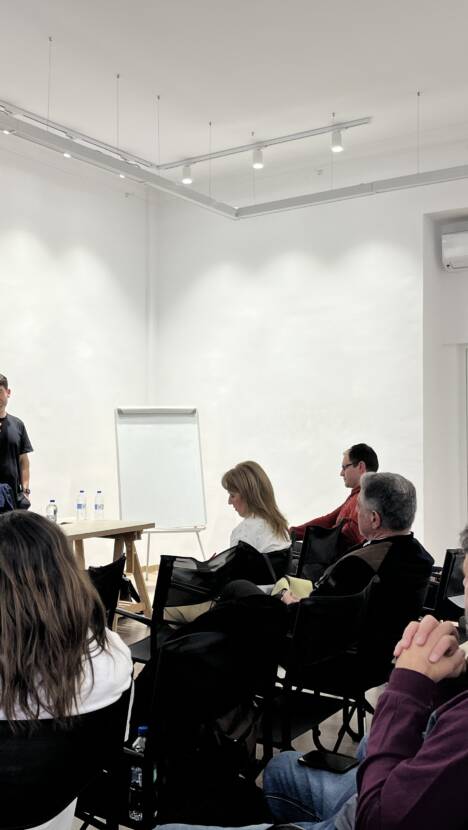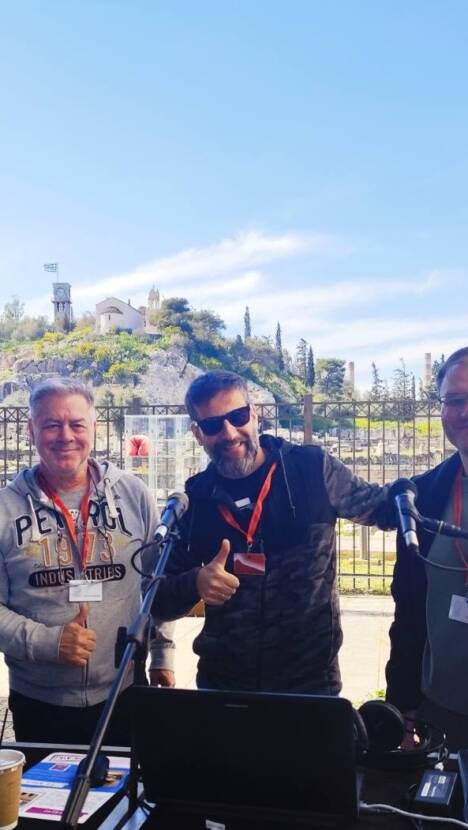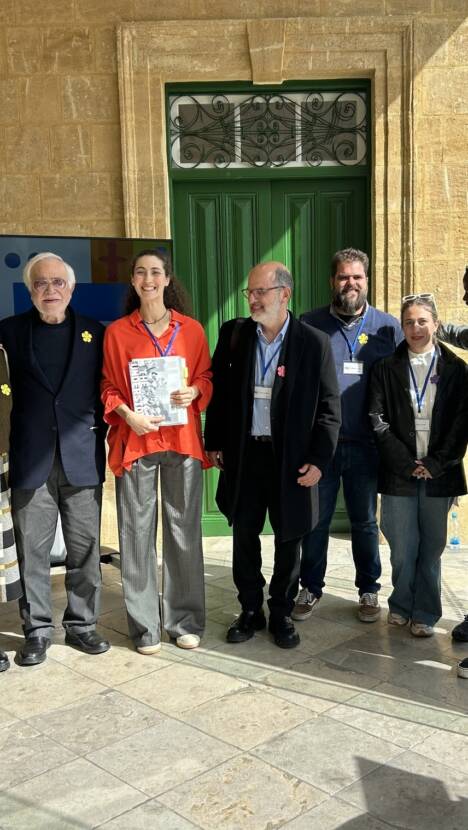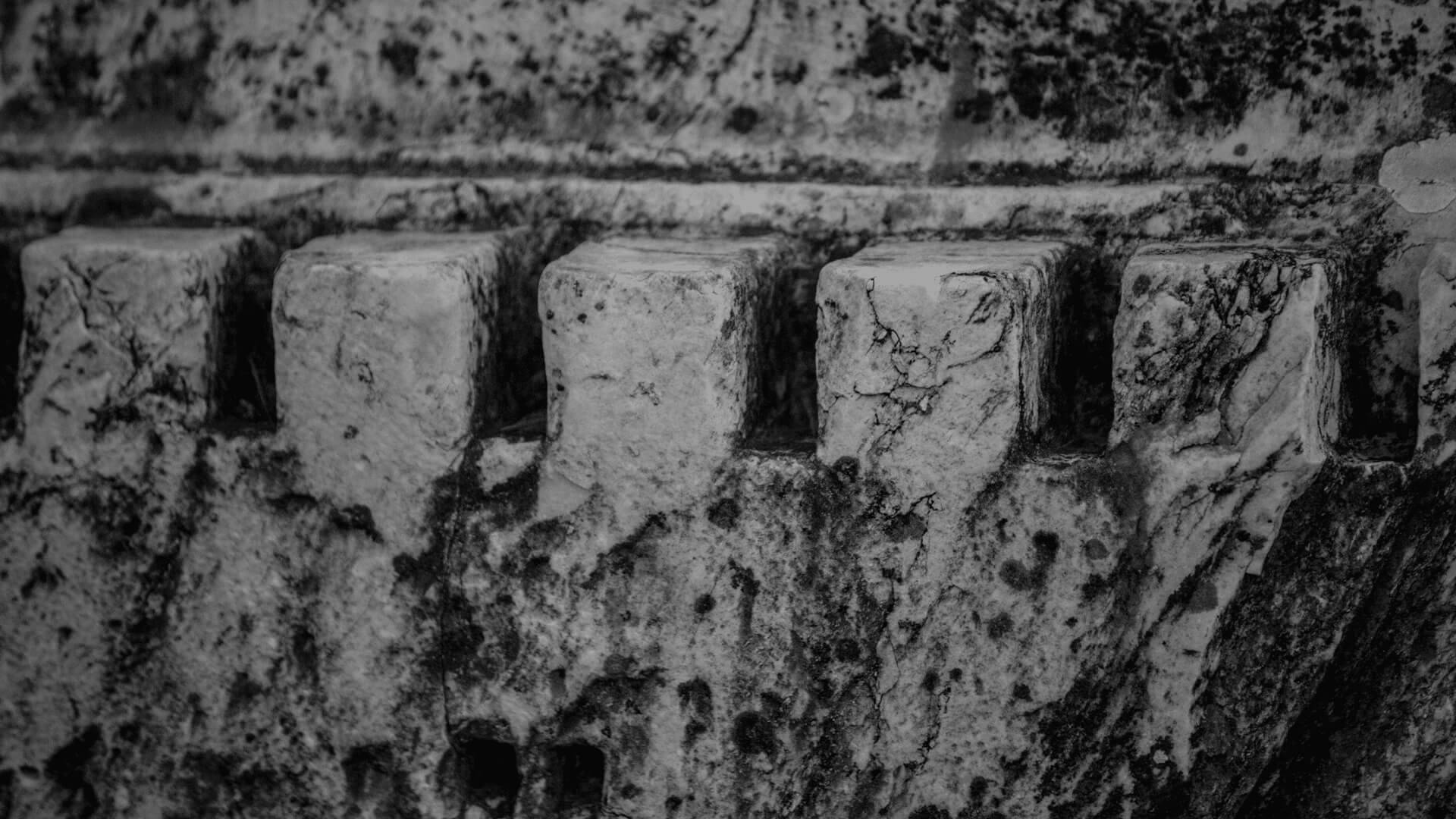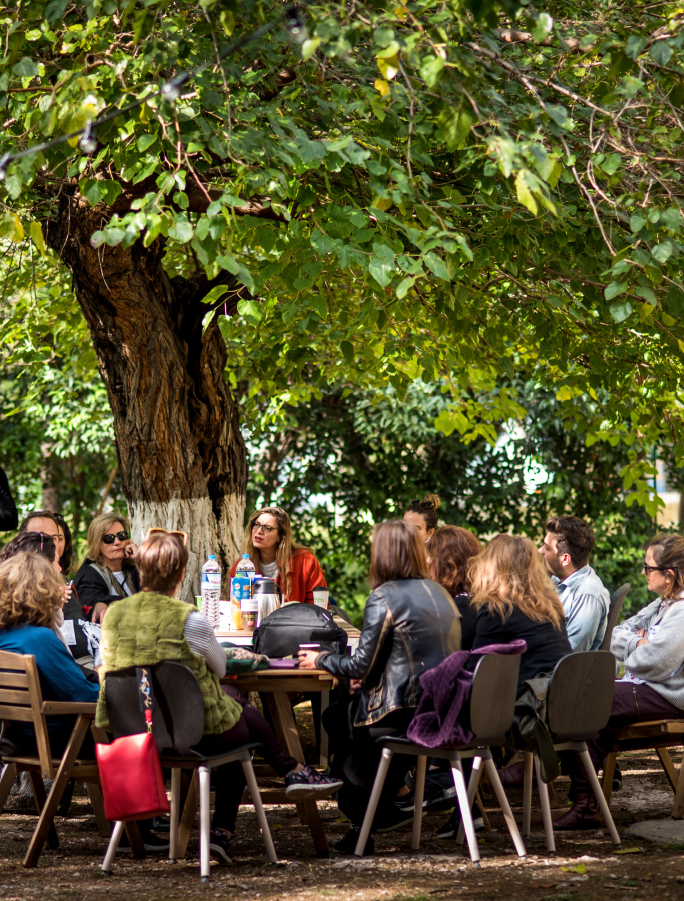Time
19:00
Continuing the remarkable tradition of Elefsina in Installation Art, as it was developed through the Aeschylia Festival, the courtyard of the Old Olive Mill opens up once again, to welcome internationally renowned sculptor, Andreas Lolis, for a site-specific installation, titled “Behind the theater,” produced by Eleusis 2023 European Capital of Culture and co-organized with Aeschylia Festival. The installation will be exhibited from Wednesday, August 25, 2021,, behind the open theater of the Old Olive Mill. The official opening will take place on Thursday, September 9, 2021, at 20.30.
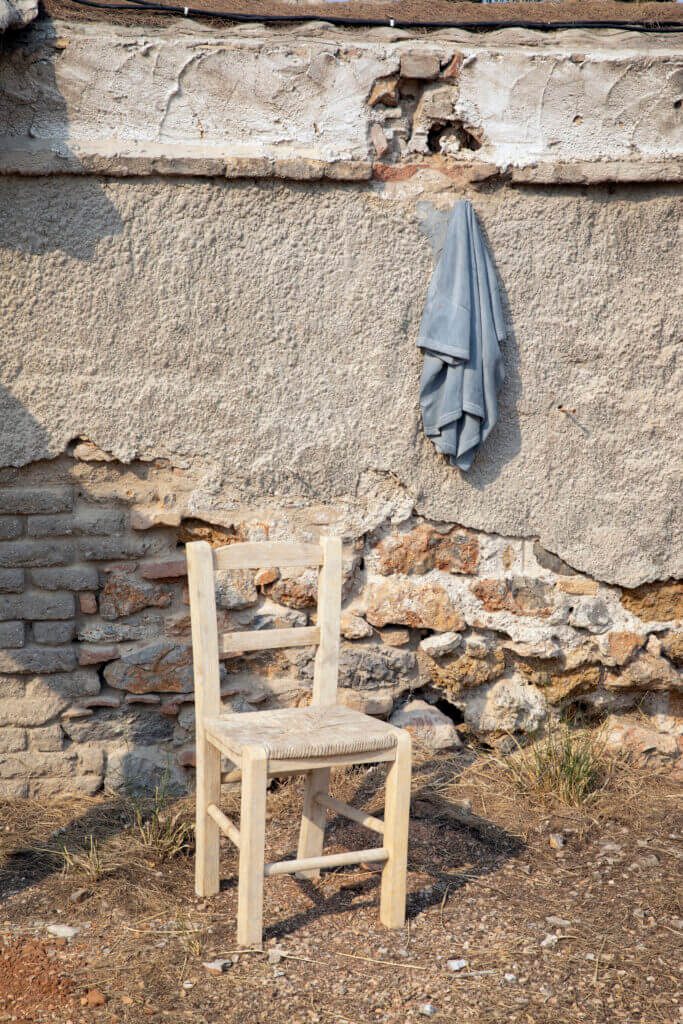
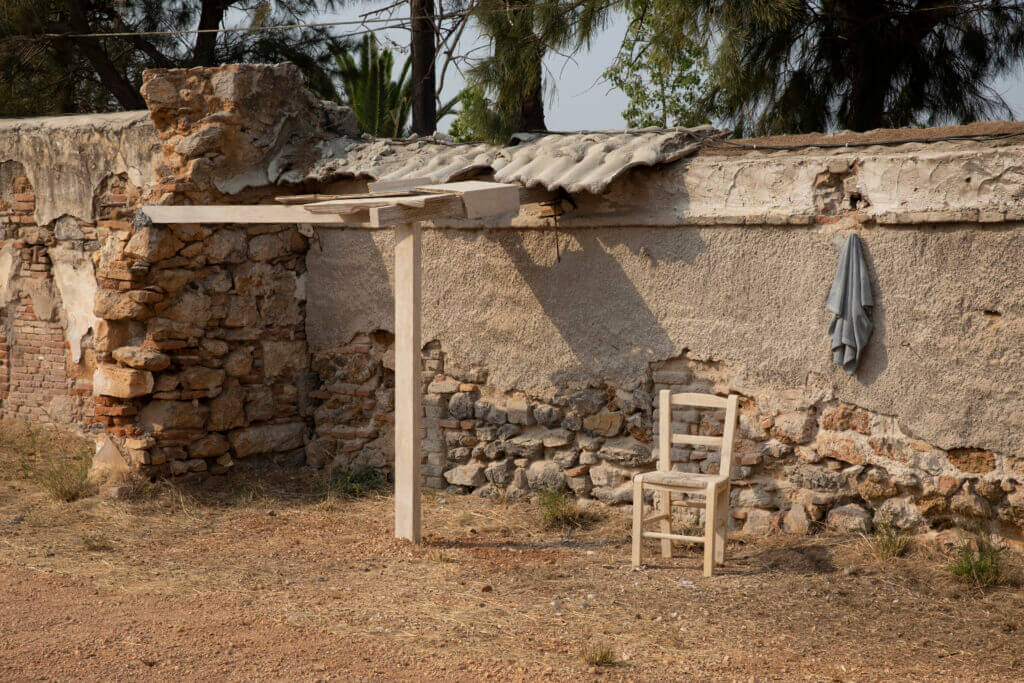
The installation “Behind the Theater” is the result of a collaboration between sculptor Andreas Lolis, architect Dionisis Sotovikis and art curator Christoforos Marinos, who approached this in situ installation as a unique scenographic experience. Andreas Lolis’ marble figures intervene in the existing ruins and the natural landscape of the Old Olive Mill, creating a route that takes the form of a narrative puzzle, leading to twelve episodes or “sets.” As visitors are crossing this route, they are called upon to complete the puzzle, like spectators of a theatrical play without actors, with the mystical landscape of Elefsina as the main protagonist.
In his notes, the exhibition’s curator, Christoforos Marinos, mentions the following:
Behind the open theater of the Old Olive Mill in Elefsina, visual artist Andreas Lolis presents a large sculptural installation that resembles an ongoing excavation. The excavation presented by Lolis appears to be frozen in time: we do not know when it started or when it will end. It is a hymn to materiality, where the present, the past and the future of a place become one. “Behind the theater,” temporalities alternate constantly. As a result, one loses the sense of time.
Operating as a threshold detector, Lolis discreetly intervenes in the existing ruins and the natural landscape. He creates a sculptural environment that emphasizes the unforced, theatrical side of everyday life and highlights the bodily senses. His silent interventions interact with the smell of the sea and the plants, the sounds of birds and passing cars, and the neighboring cement plant.
Visitors follow a short, but carefully planned, route that leads to twelve episodes or “sets,” the main feature of which is human absence. They encounter material remains, in marbled forms, in a narrative puzzle that they are called to complete.
Lolis’ “excavation” is based on long and thorough research on the behavior and capabilities of marble. In Elefsina, the artist proposes a multi-sensory experience of place, ruin and landscape. His works refer to the archaeology of the senses and the experience of borders. They elevate the insignificance of everyday life. They make visible, what usually goes unnoticed. They are works that prove the usefulness of the useless.
Admiring Lolis’ excavation from above, from the theater’s upper tier, the view that opens up in front of you is illuminating: it reveals a second theater, which features a play without actors, with the mystical landscape of Elefsina as the main protagonist.
The history of Installation Art at Aeschylia Festival
In 2004, moving past the boundaries of its initial, purely performative, character, Aeschylia Festival included Installation Art as a structural element in its annual artistic programming, a fact that was embraced by the city and its inhabitants. The first visual arts installation that took place as part of the Festival was the work by Vana Xenou, entitled “Elefsis – Pass,” which was presented in the “Kronos” industrial complex. Since then, Elefsina has hosted various internationally renowned visual artists, such as Kalliopi Lemos, Marios Spiliopoulos, Leda Papaconstantinou, Diohante, Stephen Antonakos, Stefanos Tsivopoulos, Nikos Navridis, Michelangelo Pistoletto, Tarek Atoui, Emilia Bouriti, Eleni Panouklia, Danae Stratou and Aspasia Stavropoulou. Building on this tradition, and highlighting Elefsina as an international meeting point for site-specific and site-sensitive artistic creation, the goal of Eleusis 2023 European Capital of Culture is to curate the visual installation of the Aeschylia Festival on an annual basis. This year, we are honored to collaborate with distinguished sculptor Andreas Lolis.
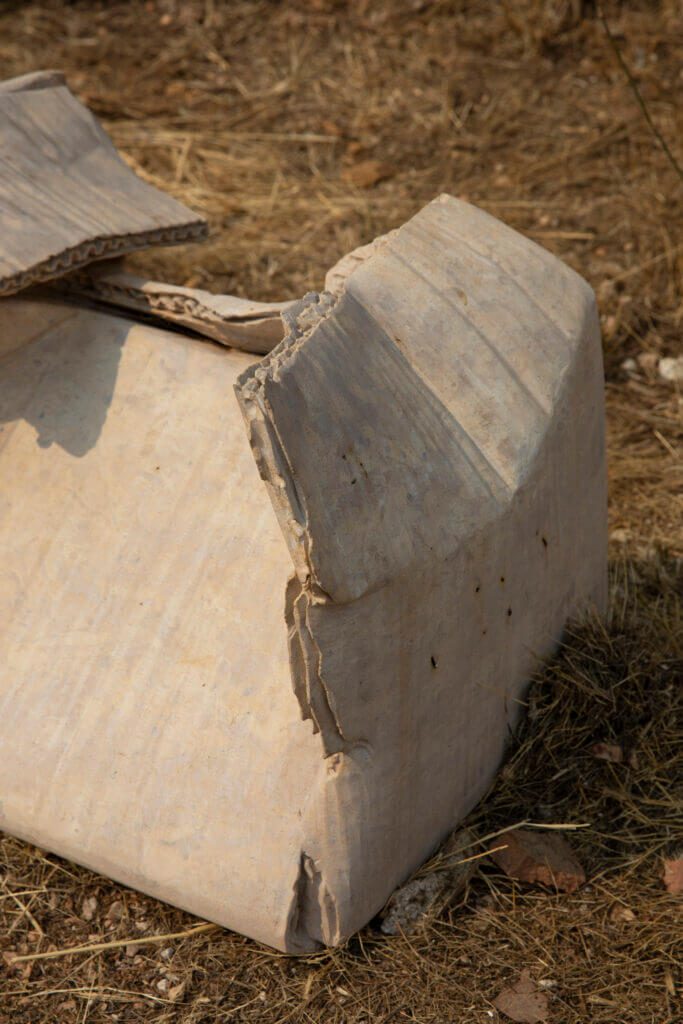
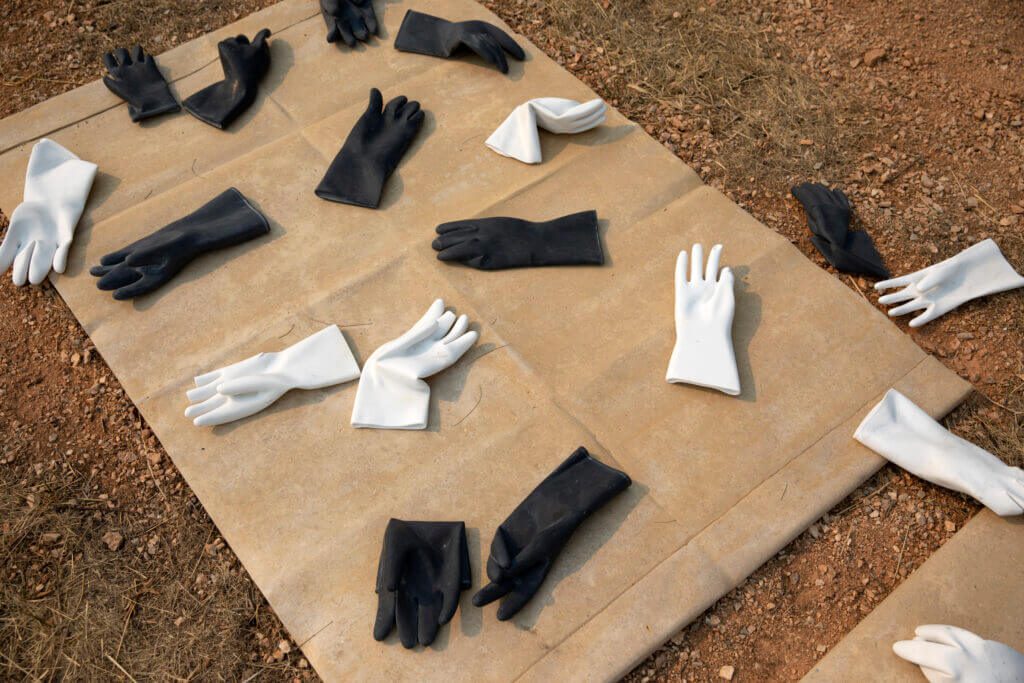
Event Info:
During the Aeschylia Festival’s theatrical performances, the exhibition will be open until 20.30. For the detailed program, please visit 2023elevsis.eu & aisxylia.gr.
To ensure public health, the entrance to the show will take place exclusively with:
-Valid Vaccination Certificate (activated 14 days after the second dose of vaccine or 14 days after the single dose vaccine)
-Valid Disease Certificate (issued 30 days after the positive test and valid for 180 days)
-Negative PCR test (72 hours) or rapid test (48 hours) before the event.
-Only visitors under the age of 18 can enter with a self-test (24 hours), signed by a parent and a registered statement through self-testing.gov.gr. Handwritten certificates will not be accepted.
Visitors who do not meet one of the above conditions will not be allowed to enter
During all Eleusis 2023 European Capital of Culture events, all the necessary measures are taken, in accordance with the relevant health protocols, for the safety of both the public and each event’s employees.
